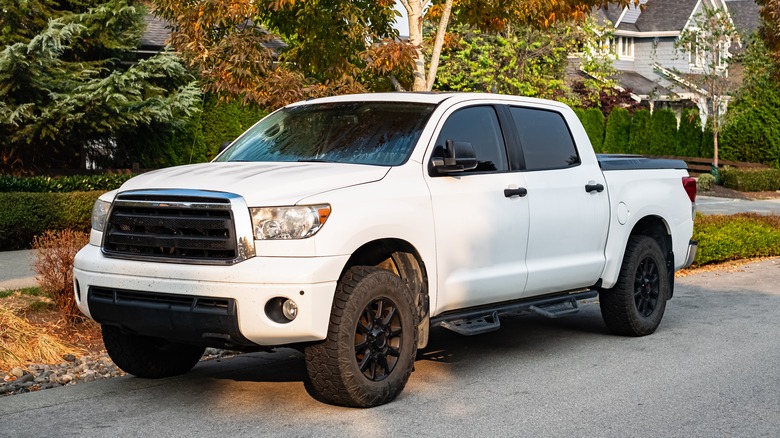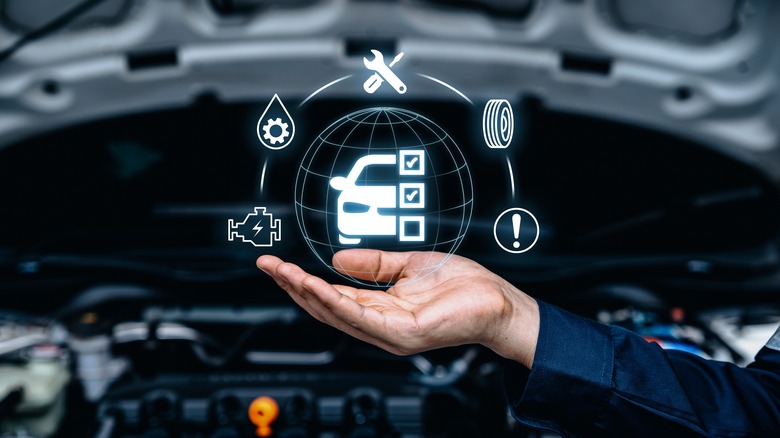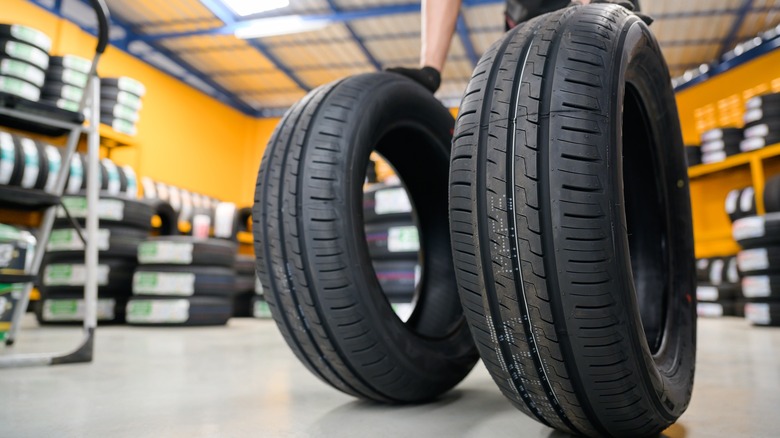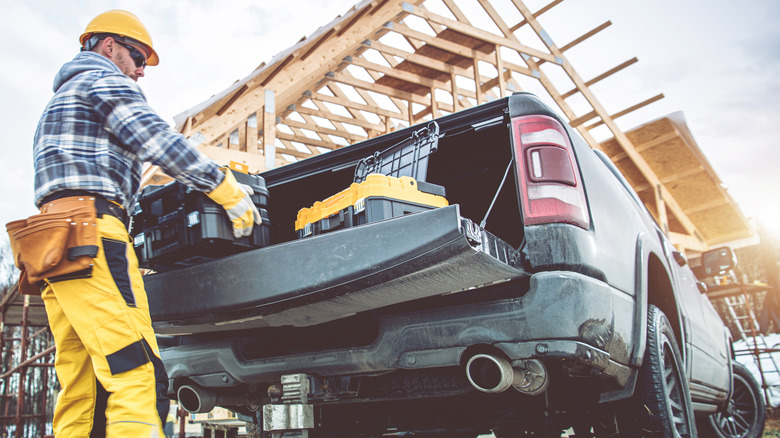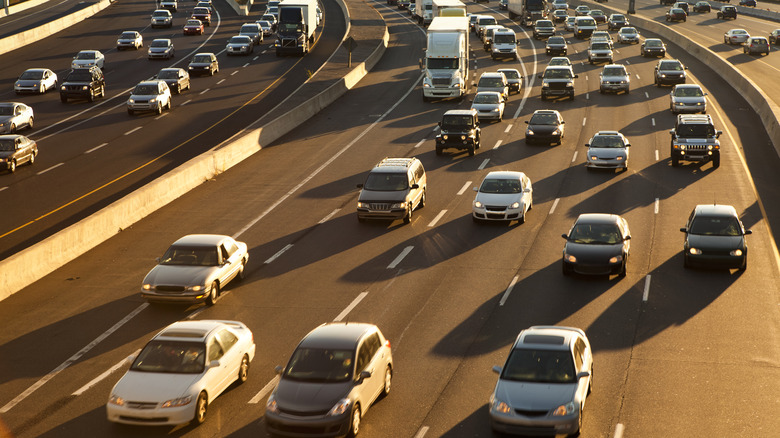5 Fuel-Saving Tips & Tricks For Pickup Truck Drivers
Pickup trucks are a popular choice among automobile buyers, and rightly so. They are powerful vehicles that can handle rough terrain and harsh weather conditions while allowing you to haul and tow more stuff than most other passenger vehicles. In the past, pickup trucks were rugged vehicles mostly devoid of sophisticated features and luxurious amenities.
Today, however, pickups come equipped with a wide range of technology, safety, and comfort-focused features, making these vehicles a lot more versatile than the functional models of the previous decades. What's more, pickup trucks have gotten a lot bigger over the decades. This has resulted in many pickup owners using their trucks for not just work-related tasks but also as their daily drivers for commuting to and fro and for road trips with friends and family.
One of the only real downsides to this increased usage, however, is that you'll need to account for the additional gas consumption. As useful as they might be on-road, pickup trucks, being large vehicles, are gas guzzlers. When fuel prices are high, this can make them rather expensive to operate. Even if fuel prices are not a concern, the environmental impact of driving a gas-guzzling machine is hard to ignore. The good news is that there are various things you can do to improve your pickup's fuel efficiency.
Get your pickup truck serviced regularly
If you noticed that your pickup truck doesn't go as far as it used on a full tank of gas, it's likely time to schedule a maintenance check with an authorized or reputable service center. Keep in mind that the U.S. Department of Energy notes that "tuning a neglected vehicle or fixing one that failed an emissions test can increase fuel efficiency by an average of 4%." While a basic engine tune-up can be a DIY project, it's important that you don't neglect regular professional servicing.
A service technician can perform a comprehensive evaluation of your pickup truck and spot issues, like clogged air filters, fuel leaks, and pressure leakages, which might be causing your vehicle to consume more gas. Typically, the truck's owner's manual will tell you how often you need to take it for servicing. You're likely to see two types of service intervals in the manual: one for regular usage and another for off-road usage. The intervals are much shorter if you use your vehicle for off-road driving, so be sure to check and schedule your maintenance appointments accordingly.
While a service technician will evaluate your vehicle's condition and resolve any major issues, it's also important that you self-monitor its performance and be mindful of the type of gas, oil, and filters used to avoid experiencing increased fuel consumption between service appointments. Additionally, if you have a newer pickup truck, check for software upgrades that may be available. A timely software update may help improve your pickup truck's performance and, in turn, its fuel efficiency.
Use the right tires
The type and brand of tires you choose for your truck can make a significant difference in its fuel economy. In fact, the U.S. Department of Energy states that "20% to 30% of a vehicle's fuel consumption and 24% of road vehicle CO2 emissions are tire-related." Your vehicle's tires have that much of an impact on mileage because of rolling resistance, which refers to how much force is required to make the tires roll on the road.
Tires with a low rolling resistance offer better fuel efficiency than tires with a higher rolling resistance. If you're driving a brand-new pickup, it likely still has the manufacturer-recommended tires, which provide the best balance between performance and fuel efficiency. However, if you're trying to increase your truck's fuel efficiency, it's best to find tires with low rolling resistance.
But changing the tires is only the first step. Once you swap out your current tires, you'll need to perform regular checks to ensure they are adequately inflated. Under-inflated tires may be caused by numerous factors, from the quality of the construction and material to the road conditions they are subjected to, but the bottom line is that they increase rolling resistance. This, in turn, increases gas consumption. The good news is that checking and maintaining a vehicle's tire pressure is fairly straightforward. While you're checking the tire pressure, take some time to correct the wheel alignment as well. Misaligned wheels don't just increase rolling resistance, but they could also potentially speed up tire wear.
Practice safe driving
The U.S. Department of Energy notes that "aggressive driving (speeding, rapid acceleration, and braking) wastes gas. It can lower gas mileage by roughly 15% to 30% at highway speeds and 10% to 40% in stop-and-go traffic." While speeding and braking abruptly may be unavoidable from time to time, especially if you're doing it to keep yourself and others around you safe, one of the easiest ways to increase your pickup truck's fuel efficiency is by driving at a conservative pace.
Speeding increases the rolling resistance on the tires and the air resistance that the vehicle has to face, which, in turn, reduces fuel efficiency. While the speed at which a pickup can achieve maximum fuel efficiency varies, fuel efficiency typically starts to decrease when you're driving over 50 mph. Likewise, if you're consistently braking abruptly, you're likely not taking your foot off the gas pedal in time to allow your vehicle to slow down gradually; instead, you're using up gas to maintain your pace right up until you come to a hard stop.
The best way to remedy this is to use cruise control whenever possible. If you can't use cruise control to drive at a constant pace, evaluate the road conditions so you can, at the very least, avoid accelerating and braking abruptly.
Account for aerodynamic drag
Aerodynamic drag can have a significant effect on your pickup's fuel efficiency. To reduce its impact, consider investing in the right accessories for your pickup and removing any that may increase the drag. For instance, you can mount a roof spoiler, also known as a roof wing, on the roof to produce greater downforce. A roof spoiler helps increase the stability of the vehicle, which, in turn, improves fuel efficiency, especially when you're driving at high speeds.
Keep in mind that while mounting a roof spoiler is fairly easy, it's important that it's placed at the right height to maximize your pickup's fuel efficiency. If you're uncertain about the best height for the roof spoiler, it's best to have the installation done at a service center or workshop. Conversely, some accessories, like the extra lights that you may have installed for added safety or the top bars or racks that you may be using to carry additional loads, can increase aerodynamic drag.
While these accessories may come in handy from time to time, it's best to evaluate how often you use them and whether the trade-off in terms of fuel efficiency is worth it. Reducing the vehicle load by offloading any unnecessary cargo is another great way to reduce aerodynamic drag. While many pickup owners exclusively use their vehicles to tow or haul heavy loads, it's best to check from time to time if you have additional heavy cargo in the truck bed that you really don't need.
Plan your route to minimize idling
If your regular route is one that's congested with traffic and a number of traffic lights, consider planning your route in advance. Keep in mind that a flatter route, even if it is longer, consumes less gas than a shorter route that requires frequent stops, passing through hilly or uneven terrain and idling. Among these, idling in traffic may seem harmless, but it can cause a significant drop in fuel efficiency and even cause long-term damage to the engine components.
If you need to travel long distances often, consider using Apple CarPlay or Android Auto Maps apps to optimize your route. This can help you avoid heavily congested areas and drive through alternative roads free of excess traffic and stops. If you currently drive during peak hours and have to deal with an onslaught of traffic, you're best off leaving your home earlier in the morning or later at night to avoid the rush.
